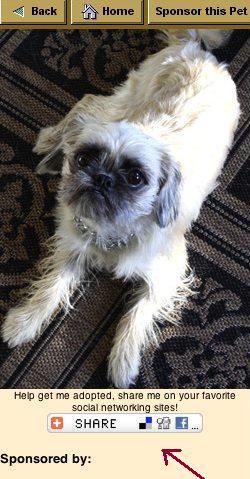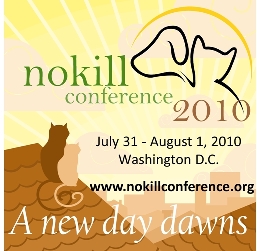How Technology is Revolutionizing the No Kill Movement
By the spring of 2009, there were almost 600 million users of online social networks, like Facebook, MySpace, Bibo, Hi5 and Twitter—roughly 70% of the total Internet users worldwide. In spite of the massive market share already enjoyed by this growing media, all indications are that usage is rising fast, and, according to some, accelerating.
Some industry analysts predict that growth of social networks will not taper off significantly for better than a decade, at which time somewhere in the range of 80% of Internet users will be connecting through social networking sites. Others suggest that as these networks evolve to offer more functionality, their growth could expand beyond projections.
While users of social networking platforms do so for several reasons, including connecting with family and friends and re-connecting with old friends, their members want more: they want to actively share with family and friends. In fact, they want to create value through media. Why should animal shelters care? How can animal protection organizations leverage social networks to expand our cause? The answers are many, but more importantly, the possibilities are limitless.
Social networking will affect every aspect of the animal welfare field in ways we have only begun to think about. Imagine, for example, a shared lost and found pet recovery system implemented communitywide. Not only could people who have lost pets post photos and descriptions of their animals, the system itself could send this information via social networks to cell phones of followers of the system. In this scenario, someone could be out looking for their lost pet, hanging posters, or visiting impound centers, and receive an automated text message on their cell if the animal is found. This is not some fantasy scenario. A system like this has started operating in Minnesota.
Because of the ability of social networking to reach masses of people nearly instantaneously, social networking is changing the way emergency response or rapid response teams communicate, especially given the fact that these networks have both public and private sharing options. Teams of response personnel can enjoy confidential instant communication from anywhere, then share selected public information to followers of their efforts.
Recognition for volunteers, published memorials and honoraria for special people and pets, and calls to action on social issues are just a few areas where social media is already having an impact on animal welfare issues. During the current legislative session, for example, we will be using Facebook and Twitter in our efforts to pass legislation to ensure enforcement of existing animal cruelty laws in Minnesota at puppy mills. Even though there is widespread public support for proposed legislation, some very large and powerful national special interest groups, including the American Kennel Club and the National Rifle Association, have joined in opposition.
The challenge associated in going head-to-head with large, national special interests can seem daunting. That challenge is made more difficult given the idiosyncrasies of the legislature. For example, prior to a committee hearing on a bill, there is generally very short notice. During that time, supporters like Animal Ark must arrange for expert testimony, rally supporters to contact committee members asking them to support the bill, and encourage people to attend the hearing. Social networking provides the ideal solution to this challenge.
From nearly anywhere, using a cell phone, we will be able to send a simple text message or “tweet” that will alert all of our friends and followers on multiple Twitter and Facebook accounts. Additionally this one, simple “tweet” can simultaneously update web pages that are not directly within those networks. Thousands of recipients of these calls to action will receive them any way they choose, via text message, email, or message notification in their favorite social networking sites.
Unlike broadcast email blasts, which are often perceived as spam even when the messages carry important, friendly content, messages distributed via social networks are generally received in a more open way. This is because the recipients of the messages are, by the very nature of these networks, receiving the message from someone they have said is a “friend.” They are also, therefore, more likely to send the messages on to their other friends.
These technologies level the playing field, allowing shelters and small grassroots organizations to challenge the status quo in other ways as well. The Humane Society of the United States, for example, is arguably the richest and most powerful animal protection organization in the country. Forbes listed it as one of the top 200 charities in the nation overall and certainly the wealthiest animal welfare organization. It has tremendous media reach and media power as a result of this enormous wealth. But it is vulnerable to social marketing. In February of last year, it lobbied a court to kill all the dogs and puppies seized from a dog fighter in North Carolina based on its outdated and regressive policy that all dogs associated with dog fighters should be killed as a matter of policy. This included friendly dogs and nursing puppies born in the shelter after the seizure. The court deferred to HSUS “experts” and all the dogs and puppies were put to death.
In the past, some local dog lovers might have complained but their concerns would not have been heard very far and wide. But in the age of social networks, condemnation of HSUS went viral, spreading around the world. It brought the largest and most powerful organization to its knees, and within weeks, HSUS rescinded the policy because of the bad “press.” All because of social marketing.
Although implementing some of these efforts can require technical expertise, most are incredibly simple. But simple does not mean less powerful. In fact, some of the easiest to implement could have the greatest impact in terms of lives saved. Adding a “share” button to every pet page on a shelter’s website for example is very easy to do. But its reach is enormous: it quickly connects animals available for adoption to a network of millions of users. (Not all “share” buttons are created equally. To learn how to implement this feature on your site, click here.)
Animal Ark, Minnesota’s largest No Kill animal welfare organization implemented a share button last month. Immediately, Animal Ark pets began popping up on social networks. Here is a portion of a Twitter feed as an example:
On Facebook, discussions on specific animals have resulted in dozens of comments on various networks. But more importantly, since this feature has been implemented, the total number of unique daily visitors to the animal pages on Animal Ark’s website has increased significantly. Each of these visitors is, on average, looking at several pets, resulting in thousands of increased “hits” daily to the pages of animals available for adoption on our website. This surge in web traffic has coincided with more visitors to the shelter, quicker adoptions, and even online sponsorships of animals, generating revenue.
How does this work? The average Facebook user, for example, has roughly 130 friends on the network. When a shelter allows for the sharing of a pet’s link, and asks their friends and followers to share the pet with their friends and followers, the animals’ pictures and profiles spread across the social networks rapidly. The acceleration of the spread can be exponential, especially if followers and friends are actively encouraged to continue spreading the word (i.e., sharing the animals).
The sharing of adoptable animals via social networking sites is viral marketing in its truest, purest and best form. It costs virtually nothing to get started, and the payoffs are tremendous: more and quicker adoptions, donations, and other support. Furthermore, it is just one of countless uses of social media that animal welfare advocates will be able to leverage to save the lives of homeless animals.
Animal Ark, for example, has gone one step further by integrating our shelter management software with Twitter and Facebook. When an animal is adopted at the shelter, an automated message is sent to these networks announcing the adoption. Other automated “tweets” have been built into Animal Ark computer systems, resulting in what is, in effect, an automated, real-time news feed from the Animal Ark shelter. This feed is then featured and updated in real-time on our various web pages.
All of these examples are just the beginning. There are unlimited uses of technology and social networking in the animal welfare field. Given the built-in capabilities of many of these networks to deliver text messages to users’ cell phones, and given the fact that people who have lost their pets are often away from home posting lost pet postersand looking for their pets, the functional utility of these networks clearly has an enormous reach. They will touch every component of our work, from volunteer recruitment and recognition to capital campaigning. And millions of animals can be saved in the process.
Guest blog by Mike Fry.
Mike Fry is the Executive Director of Animal Ark, Minnesota’s largest no kill animal welfare organization. He is also one of the hosts of Animal Wise Radio, a weekly, syndicated radio show dedicated to animals. Fry is the former Director of Internet Computing for Pentair and former VP of Internet Technologies for Worthington Software. He is credited with assisting in the development of commercial Internet technologies that are now in use worldwide.
Join Mike’s online community where technology-savvy animal welfare advocates can share ideas about using technology to advance animal welfare causes by clicking here.
Mike will give a workshop on using technology to save animals at No Kill Conference 2010. To learn more and/or register, click here.


